It may seem like music fans today have a choice between two extremes: the beloved yet laborious ritual of listening to vinyl—or the convenience of streaming platforms, where instant gratification (and often subpar audio quality) is just a click away. As a result, if you’re like me, that CD collection now languishing under your bed has become an irrelevant audio vessel. So what is Danish electronics innovator Bang & Olufsen doing releasing a $55,000 CD player today?!
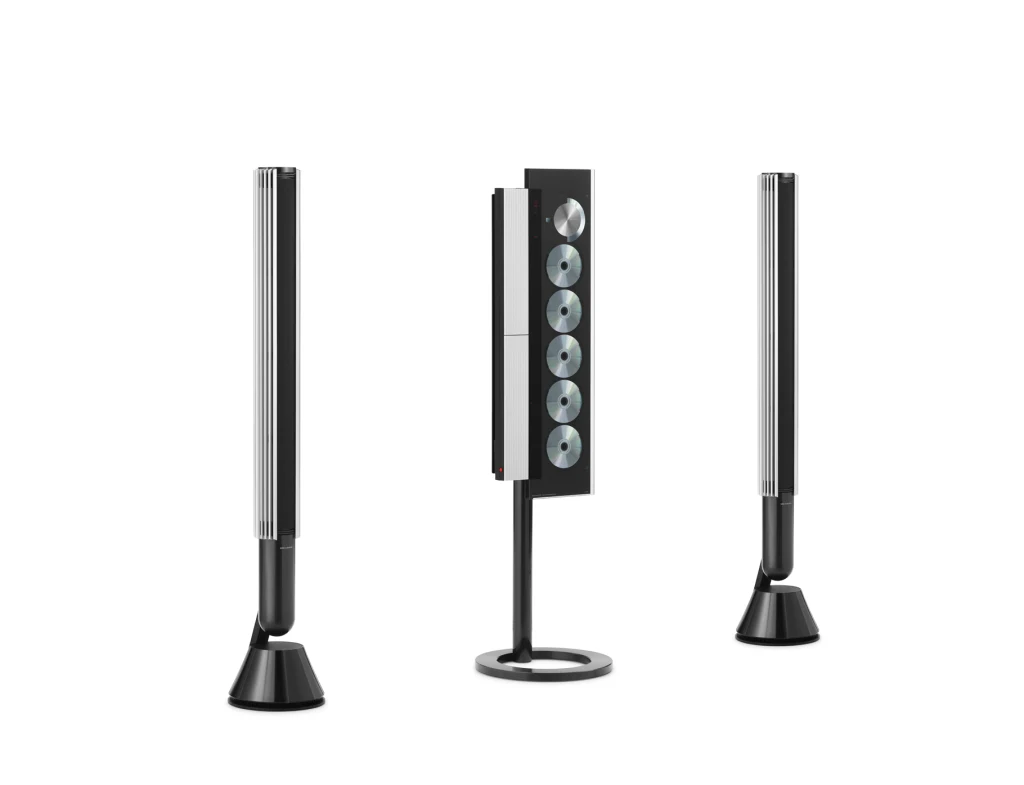
A history of relaunches
In 2020, Bang & Olufsen released a beautiful record player, the Beogram 4000c. Or, rather, 95 of them, costing $11,000 each. Mads Kogsgaard Hansen, Bang & Olufsen’s Head of Product Circularity, says the launch yielded an amazing response from consumers, but people had questions. Audiophiles knew the storied 4000 series originally came out in the 1970s. Was this a new product? A reissue? As it turns out, it was something in between: Bang & Olufsen had tracked down nearly 100 original 4000 turntables, completely refurbished them, added some modern tech upgrades, and made them like-new (so much so that they now came with a five-year warranty).
“What we really succeeded at is confusing our customers in the best possible way,” Hansen says with a laugh. “We really needed to spend some time explaining that this is actually not a new turntable—that this is, in fact, a 50-year-old turntable. We have just developed a very innovative process of recreating it.”
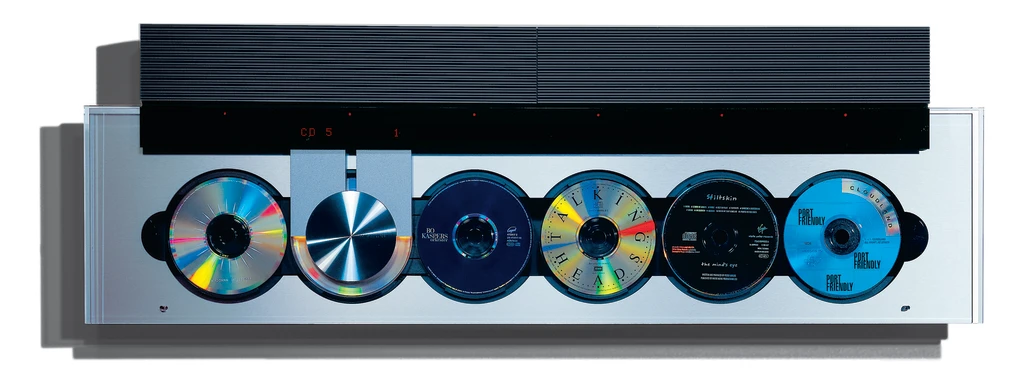
And that is exactly what they are now doing with a 200-unit release of the Beosystem 9000c, the second launch in the brand’s Recreated Classics series. When the CD player debuted in 1996, it was unlike anything on the market. At a time when discs were hidden away in the depths of bulky, noisy black box systems, the 9000 made the visual side of music visible with a tower of six CDs facing listeners viewable within a glass and aluminum housing. (As the story goes, designer David Lewis was inspired by a London record store display where six CDs were laid out in a row). Moreover, users could program playlists between the discs—a task the 9000c took on with aplomb, silently and magically shifting from one song and album to the next without any perceivable delays.
“It is actually one of those launches that just set a direction for B&O, and one of those super innovative, very radically different things that creates elements of history,” Hansen says. “It is still perceived as one of our most innovative and iconic designs.”
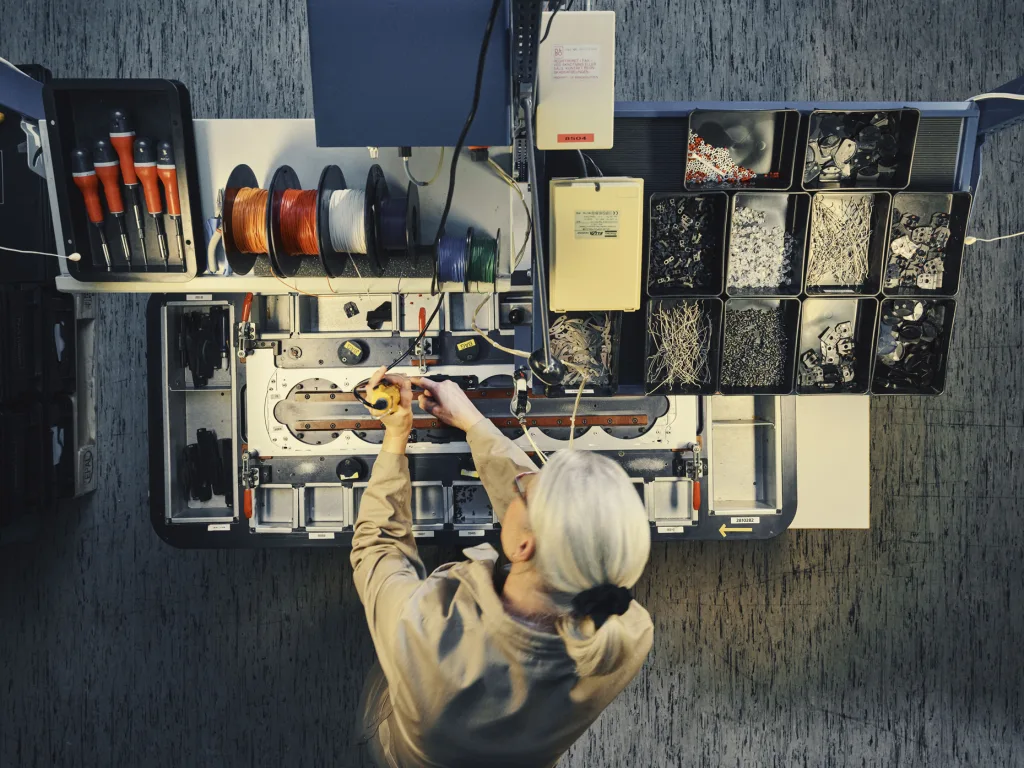
Why a CD player? Why now?
As innovative as the 9000c was at the time, it couldn’t compete with the rise of mp3s and digital streaming. In 2002, CDs accounted for 92% of music revenue in the U.S. By 2022, CDs were just 3% of revenue. And yet, there’s been a slow but steady reemergence of interest around the format thanks largely to Gen Z, who is interested in all things analog.
B&O did its homework, but there’s more at play here than teenagers spinning Taylor’s latest version or Gen Yers dusting off their scratched-up Nirvana Unplugged in New York disc.

Around 2020, Hansen says B&O made a decision that in a disposable electronics culture, they wanted to be regarded as a leader in longevity and circularity. One element of the company’s twofold plan is achieving Cradle to Cradle certification by creating products with components that are replaceable and upgradeable, elongating their lifespan.
The other is investing in the Recreated Classics series. Hansen says in B&O’s quest to understand what makes a product timeless, they have found a lot of wisdom in products from the past, like the 4000 turntable and 9000 CD player. Crucially, B&O is also packaging the vintage 9000c with its cutting-edge contemporary Beolab 28 speakers, offering a compelling use case.
“We can actually show that we can manage to connect our past with our present and the most modern technology today,” he says. “What we really want to do … is to lead and inspire an entire movement for the industry to design more circular and more long-lasting products for the future. Because if we just keep doing it in the same way as we do right now, then we will risk not having an industry.”
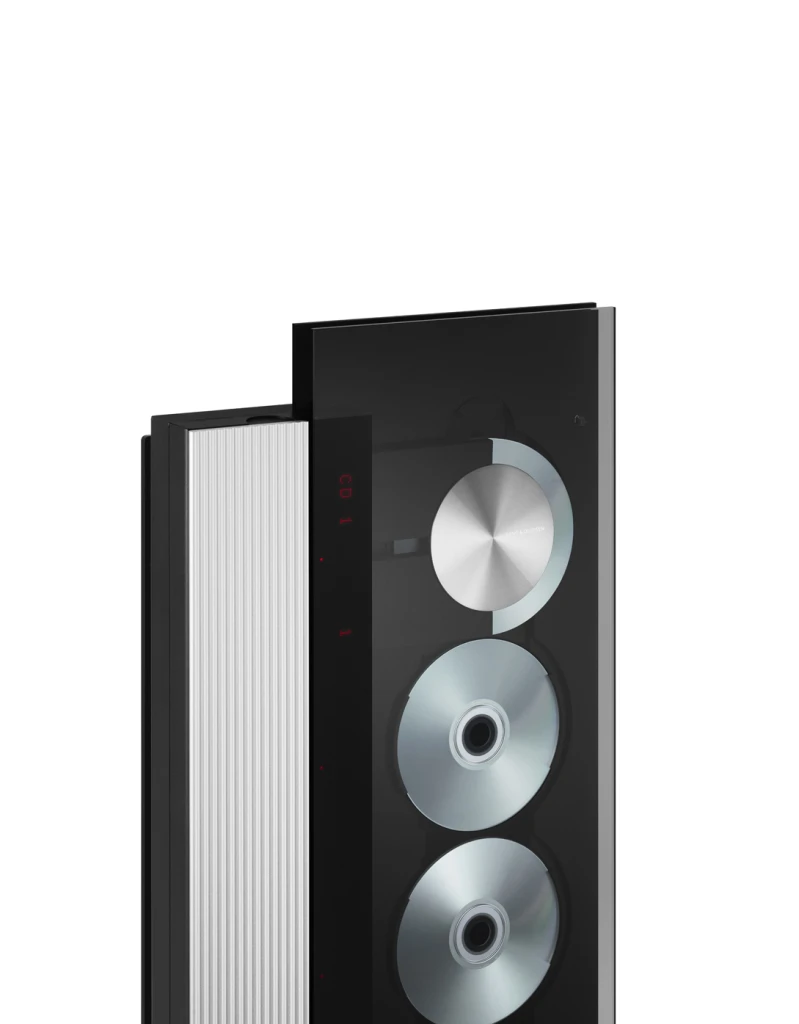
A $55,000 CD player?
Which all makes one wonder: Is a $55,000 CD player a true product launch or a smart marketing awareness concept?
Hansen says it’s fair to call it both. A few hundred refurbished and upgraded turntables and CD players aren’t going to change the world, but they do give B&O a platform to discuss its ambitions, and they indeed represent a viable product offering.
“We want to really move more and more into the luxury segment of the market—that’s where we see our future,” he says.
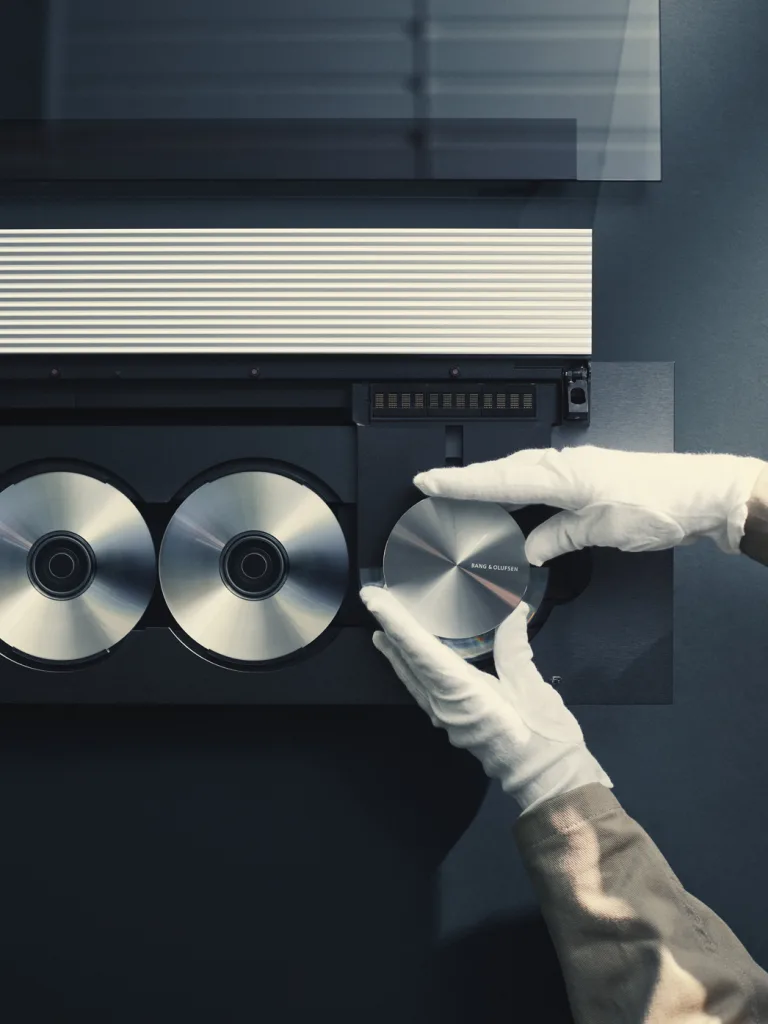
But what makes a CD player cost the same as a decent car?
First there’s the sourcing. B&O’s teams pull from stores and auction sites to come up with the inventory for a launch like this. It’s all then brought to the company’s Struer factory in Denmark, where the 9000s were first made—and where some of the technicians who originally created them still work. Each unit is manually dismantled, and every single component is scrutinized, cleaned and repaired, if needed. Fresh coats of paint are applied. The aluminum components are reprocessed to a perfect finish. A new laser reader is installed. The whole thing is meticulously reassembled and tested. Ultimately, Hansen says that more than 90% of the parts in the final unit are original, save for elements like a new stand and glass lid.
So far, that obsessive production has yielded a turntable and a CD player. Could, say, the BeoSound MP3 player logically be the company’s next successful anachronism? Hansen says he’s not able to reveal what’s next. But—
“I can’t help thinking about the whole idea of keeping choices alive, right? I really love that,” he says. “We sometimes have a lot more of a slow-culture approach to the things that we do, and celebrate some of the more analog elements in a world that is increasingly high speed. I wouldn’t be surprised if you see us explore further on both vinyl and CD, but also maybe even consider other music formats, to sort of make the complete lineup. Who knows?”
Recognize your brand’s excellence by applying to this year’s Brands That Matter Awards before the early-rate deadline, May 3.
